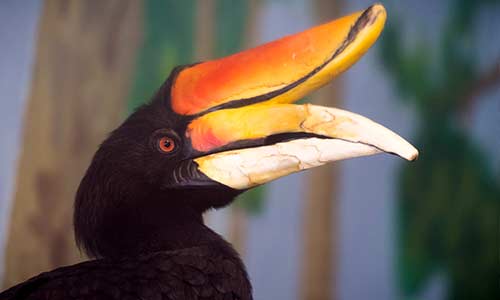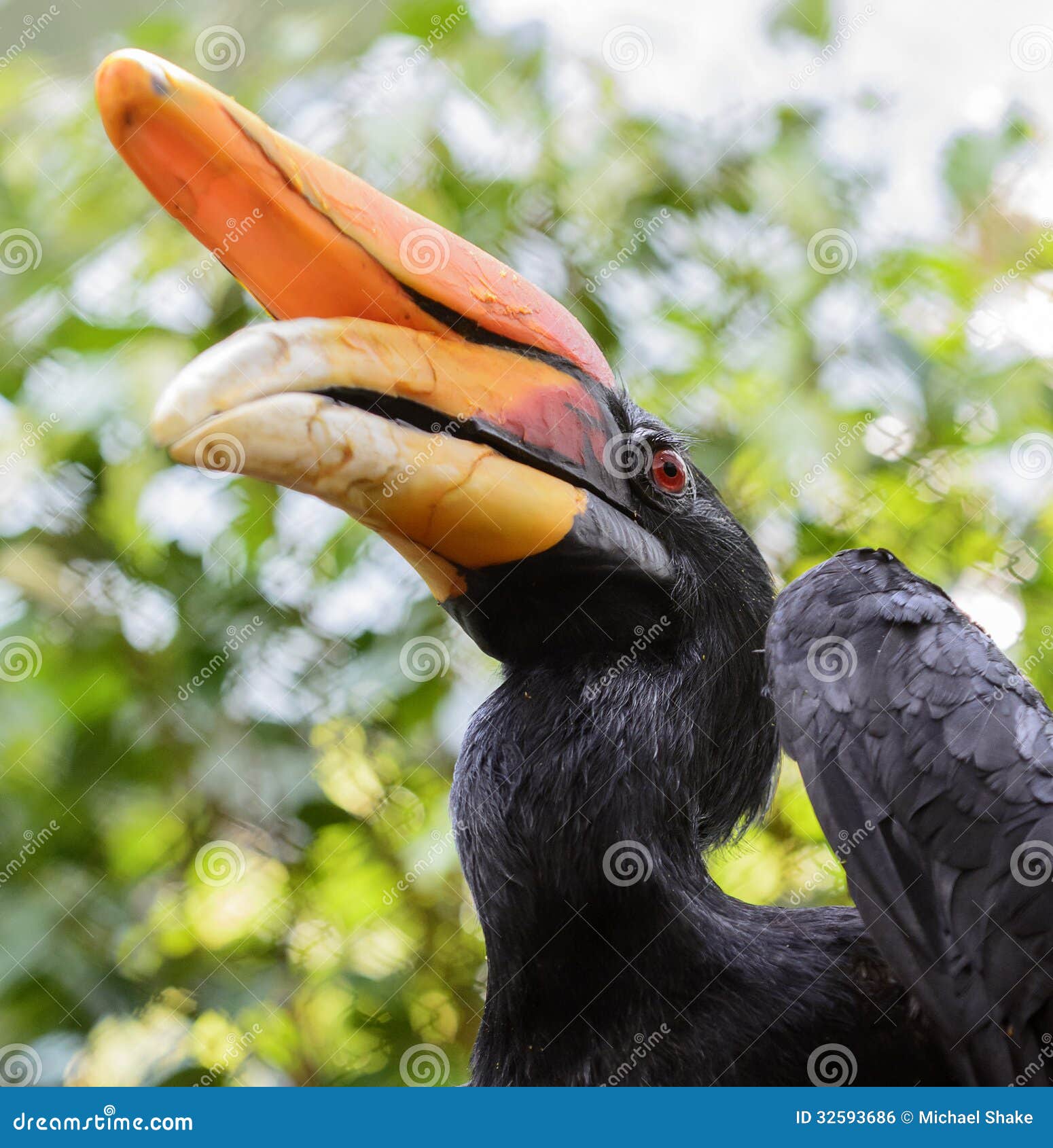
rhinoceros Linnaeus, 1758 – south Malay Peninsula and Sumatra borneoensis Schlegel & Müller, S, 1845 – Borneo The specific rhinoceros is Latin for "rhinoceros". The genus name is from Latin becerus meaning "horned like an ox" which in turn is from the Ancient Greek boukerōs which combines bous meaning "ox" with kerōs meaning "horn". Linnaeus specified the location as China. He placed it with the great hornbill in the genus Buceros and coined the binomial name Buceros rhinoceros. The rhinoceros hornbill was formally described by the Swedish naturalist Carl Linnaeus in 1758 in the tenth edition of his Systema Naturae. It is featured on the reverse of the 5 Malaysian ringgit bill. Contrary to some misunderstandings, the rhinoceros hornbill does not represent their war god, who is represented in this world by the brahminy kite. Some Dayak people, especially the Ibanic groups, believe it to be the chief of worldly birds or the supreme worldly bird, and its statue is used to welcome the god of the augural birds, Sengalang Burong, to the feasts and celebrations of humankind. The rhinoceros hornbill is the state bird of the Malaysian state of Sarawak and the country's national bird.


It is found in lowland and montane, tropical and subtropical climates and in mountain rain forests up to 1,400 metres in Borneo, Sumatra, Java, the Malay Peninsula, Singapore, and southern Thailand. In captivity it can live for up to 35 years. The species may need all that luck for their continued existence as the pristine rainforests that the rhinoceros hornbill needs to survive are being cut down at an alarming rate.The rhinoceros hornbill ( Buceros rhinoceros) is a large species of forest hornbill ( Bucerotidae).

In Asia, rhinoceros hornbills are considered a symbol of great loyalty and as a bringer of luck. As soon as the young are fledged, the parents break open the cavity, and they all leave the protective nest. If anything happens to him during this time, the entire family will starve. The male has the task of bringing food for all the occupants of the tree nest. While she is sitting on her eggs, she is in moult and becomes flightless. The female stays walled up in her “prison” for three months. This wall becomes so hard that after the incubation period the birds have difficulty breaking it open again. After mating, the female lays one or two eggs in a hollow tree trunk and closes the entrance from within using a mix of food, dung, and wood chips, leaving only a small slit open. Like all hornbills, rhinoceros hornbills are famous for their nesting habits. The tip of the beak is used like a finger to pluck fruit from the trees the serrated edges are use to grasp and tear apart animal prey.

Its most striking feature is its large, curved beak with a distinctive, bulging casque of light bone tissue. It is native to the rainforests of Southeast Asia, far from human influence, where it feeds on fruit and hunts small lizards. The rhinoceros hornbill can reach 90 centimeters in length and weigh nearly three kilograms, making it one of the largest representatives of the hornbill family. Even the hornbill’s prey, which is a small flying dragon, is an original. Circa 1833.Īttention to detail was a high priority in the restoration of this historic diorama in 2010.


 0 kommentar(er)
0 kommentar(er)
